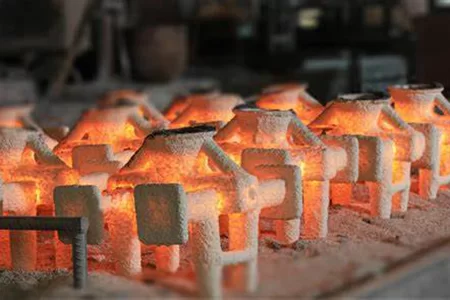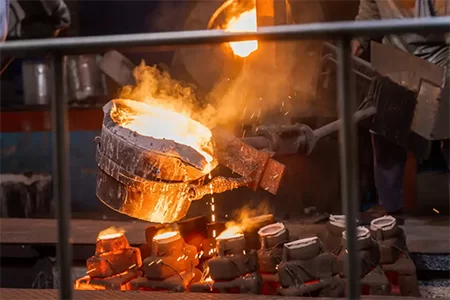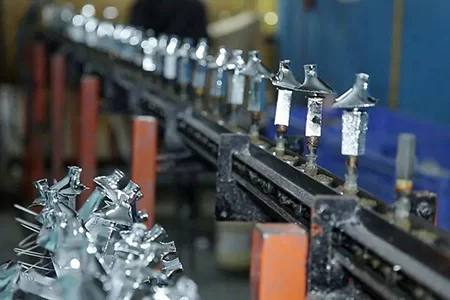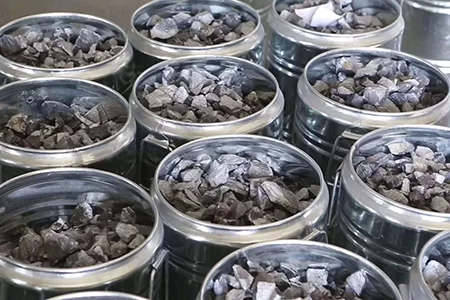
Differences in Wax Materials for Precision Casting
-
Home>
-
Blog>
-
Technology>
Differences in Wax Materials for Precision Casting
In the world of precision casting, often referred to as lost wax casting, wax materials play a fundamental and crucial role. Precision casting is a highly intricate and widely used manufacturing process that allows for the creation of complex and detailed metal components with high accuracy. The casting service provided by precision casting facilities hinges on the proper selection and utilization of wax materials. This blog post will delve deep into the differences in wax materials for precision casting, exploring their properties, applications, and how they impact the overall casting process.
Introduction to Precision Casting (Lost Wax Casting)
Precision casting, or lost wax casting, has a long and storied history, dating back thousands of years. This ancient technique has been refined and modernized over time, but the basic principle remains the same. A wax pattern is first created, which is an exact replica of the final metal part to be produced. This wax pattern is then coated with a refractory material, forming a mold. Once the mold is set, the wax is melted and drained out, leaving a cavity in the shape of the pattern. Molten metal is then poured into this cavity, filling it completely. After the metal cools and solidifies, the mold is removed, revealing the precisely cast metal component. This process is highly valued in various industries, including aerospace, automotive, jewelry, and medical, due to its ability to produce parts with exceptional detail, tight tolerances, and complex geometries.
The Significance of Wax in Precision Casting
Wax serves as the initial template for the entire precision casting process. It must possess specific properties to ensure the successful creation of a high-quality metal casting. The right wax material can make the difference between a flawless, dimensionally accurate casting and one with defects. Some of the key requirements for wax in precision casting include good flowability to fill intricate mold cavities during pattern making, sufficient strength to maintain the shape of the pattern during handling and coating, and clean burning characteristics so that it leaves no residue when melted out of the mold.

Types of Wax Materials Used in Precision Casting
Paraffin Wax
Paraffin wax is one of the most commonly used waxes in precision casting, especially for applications where cost-effectiveness is a major factor. It is a petroleum-based wax that is widely available and relatively inexpensive. Paraffin wax has a relatively low melting point, typically in the range of 47 - 64°C (117 - 147°F). This low melting point makes it easy to work with during the pattern-making process. It can be melted and poured into molds with relative ease, and it flows well to reproduce fine details.
However, paraffin wax also has some limitations. It has a relatively low strength compared to some other waxes, which means that the wax patterns made from it may be more prone to damage during handling. Additionally, paraffin wax has a tendency to shrink during cooling, which can lead to dimensional inaccuracies in the final casting if not properly compensated for. Despite these drawbacks, paraffin wax is often used in less demanding applications or in cases where large quantities of patterns need to be produced at a low cost. In some casting services, paraffin wax is used for creating patterns for small-scale production runs or for prototypes, where the focus is on getting a basic understanding of the part design without incurring high material costs.
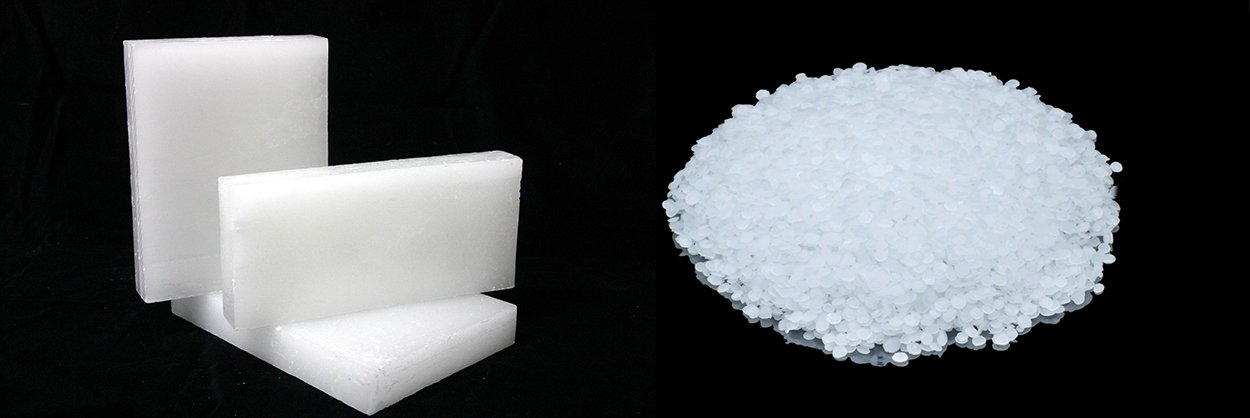
Microcrystalline Wax
Microcrystalline wax is another type of wax commonly used in precision casting. It is derived from the same petroleum sources as paraffin wax but has a different crystal structure. Microcrystalline wax has a higher melting point than paraffin wax, usually in the range of 60 - 90°C (140 - 194°F). This higher melting point gives it several advantages. It provides greater strength to the wax patterns, making them more resistant to damage during handling and the subsequent steps of the casting process.
The crystal structure of microcrystalline wax also results in a more homogeneous and stable material. This stability helps in reducing shrinkage during cooling, leading to more dimensionally accurate wax patterns and ultimately better-quality castings. Microcrystalline wax is often used in applications where a higher level of precision and strength is required, such as in the production of small, intricate components for the electronics or medical industries. Casting services that cater to these sectors may prefer microcrystalline wax for its ability to consistently produce high - quality patterns that can withstand the rigors of the precision casting process.
Synthetic Waxes
Synthetic waxes have gained popularity in recent years in the precision casting industry. These waxes are chemically engineered to have specific properties tailored to the needs of the casting process. Synthetic waxes can be formulated to have a wide range of melting points, viscosities, and mechanical properties. For example, some synthetic waxes are designed to have extremely low shrinkage rates, ensuring that the wax patterns maintain their dimensions with high accuracy.
They also offer excellent flowability, allowing them to fill even the most complex mold cavities with ease. Synthetic waxes can be made to be more resistant to environmental factors such as humidity and temperature fluctuations, which can be a significant advantage in certain casting environments. In the aerospace industry, where components need to meet the most stringent quality and precision standards, synthetic waxes are often used. Casting services for aerospace applications rely on the consistent and reliable properties of synthetic waxes to produce wax patterns that can be transformed into high-performance metal components.
Specialty Waxes
There are also various specialty waxes available for specific applications in precision casting. One such example is investment casting waxes that are specifically formulated for use in the investment casting process, which is a type of precision casting. These waxes are designed to have properties that are optimized for the investment casting method, such as good adhesion to the refractory coating materials used to create the mold.
Another type of specialty wax is waxes with added fillers or modifiers. These fillers can enhance the mechanical properties of the wax, such as increasing its strength or improving its dimensional stability. For instance, waxes with ceramic fillers may be used in applications where the wax pattern needs to have increased resistance to high temperatures during the casting process. Specialty waxes are often used in niche markets or in applications where standard wax materials do not meet the unique requirements of the casting project. Casting services that offer specialized casting solutions may stock a range of these specialty waxes to meet the diverse needs of their clients.
Factors Affecting the Choice of Wax Material
Complexity of the Casting Design
The complexity of the casting design is a major factor in determining the appropriate wax material. For highly intricate and detailed designs, waxes with excellent flowability are essential. Paraffin wax, despite its limitations, can be suitable for relatively simple designs due to its good flow properties. However, for complex geometries with thin walls and fine details, synthetic waxes or microcrystalline waxes may be a better choice. These waxes can flow into every nook and cranny of the mold, ensuring that the pattern accurately represents the final part design. In the jewelry industry, where elaborate and detailed designs are the norm, waxes with high flowability and the ability to capture fine details are preferred. Casting services that focus on jewelry casting often use a combination of microcrystalline and synthetic waxes to meet the demands of their clients' creative designs.
Dimensional Accuracy Requirements
If the final casting needs to meet tight dimensional tolerances, wax materials with low shrinkage rates are crucial. Microcrystalline wax and synthetic waxes, with their more stable crystal structures and engineered properties, are better suited for such applications. In the automotive industry, where engine components and parts need to fit together precisely, the choice of wax material with minimal shrinkage is vital. Casting services for automotive manufacturers will carefully select waxes based on the dimensional accuracy requirements of the parts they are producing. Even a small amount of shrinkage in the wax pattern can translate into significant deviations in the final metal casting, which could affect the performance and functionality of the part.
Production Volume
The production volume also influences the choice of wax material. For high-volume production runs, cost - effectiveness becomes a key consideration. Paraffin wax, being relatively inexpensive, may be the preferred choice in such cases. However, if the production volume is low and the focus is on high-quality, precision-made parts, the use of more expensive but higher-performing waxes like synthetic or microcrystalline waxes may be justified. Casting services that handle large-scale production contracts for consumer goods may opt for paraffin wax to keep costs down, while those working on small-batch, high-value projects for industries like aerospace or medical will choose waxes that ensure the highest quality regardless of cost.
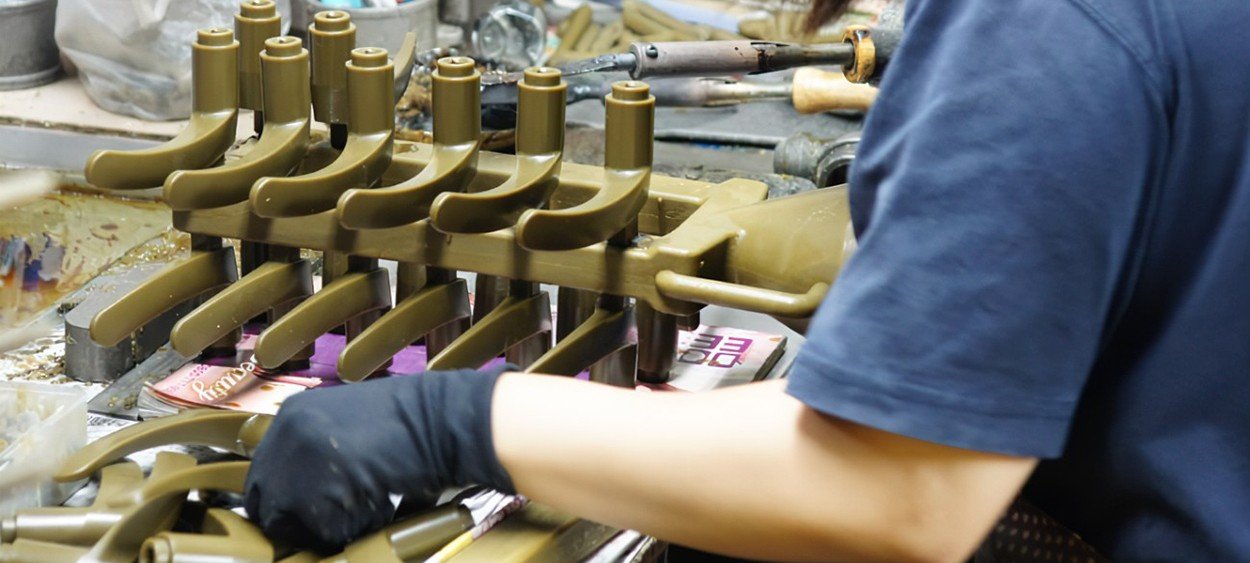
Thermal and Chemical Compatibility
The wax material must be compatible with the refractory materials used to create the mold and the molten metal that will be poured into the mold. Some waxes may react with certain refractory coatings, causing adhesion problems or other issues during the casting process. Similarly, the wax should not leave behind any residues that could contaminate the molten metal. Synthetic waxes can often be engineered to have better chemical compatibility with a wide range of refractory materials and metals. In industries where the use of specialized alloys or refractory materials is common, such as in the production of high-temperature components for power generation, casting services need to ensure that the wax material selected is thermally and chemically compatible with all the other materials involved in the casting process.
The Impact of Wax Material on the Casting Process
Pattern Making
The wax material's properties directly affect the pattern-making process. Good flowability, as seen in paraffin wax and some synthetic waxes, allows for easy filling of the mold cavity. This ensures that the pattern accurately replicates the design. The strength of the wax is also important during pattern making. Waxes with higher strength, like microcrystalline wax, are less likely to break or deform during the demolding process. In addition, the melting point of the wax determines the temperature at which it can be processed. Waxes with lower melting points, such as paraffin wax, can be melted and shaped at lower temperatures, which may be more energy-efficient in some cases. However, waxes with higher melting points may be more suitable for applications where the pattern needs to maintain its shape under higher temperatures during subsequent processing steps.
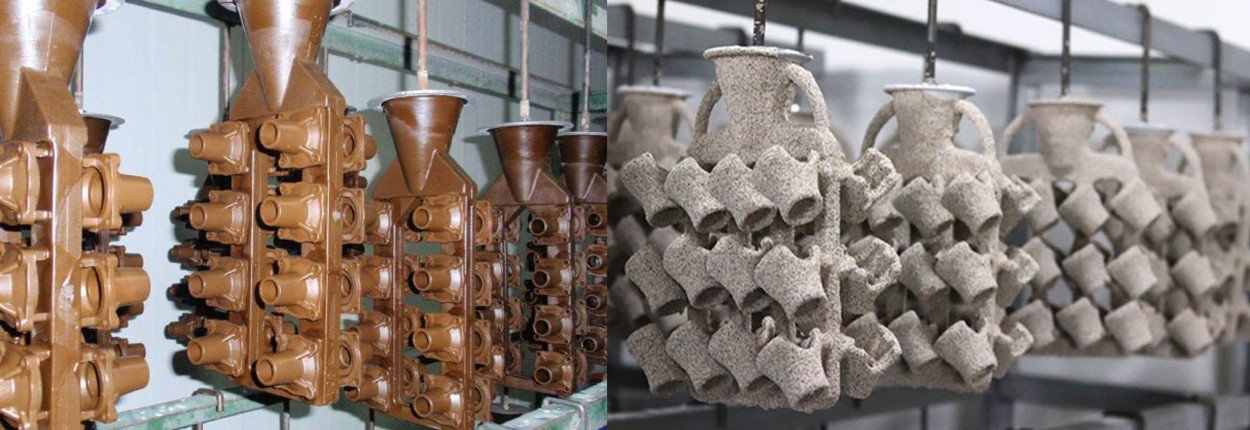
Mold Coating
The adhesion of the refractory coating to the wax pattern is crucial for the success of the casting process. Some waxes, especially those with smooth surfaces and certain chemical properties, may have better adhesion to the refractory materials. Specialty waxes designed for investment casting often have additives or surface characteristics that promote good adhesion. If the coating does not adhere properly to the wax pattern, it can lead to defects in the mold, such as cracks or delamination. These defects can then translate into flaws in the final casting. Casting services pay close attention to the compatibility between the wax material and the refractory coating to ensure a strong and uniform bond during the mold-coating stage.
Wax Removal
The process of removing the wax from the mold, known as dewaxing, is also influenced by the type of wax used. Waxes that burn cleanly and leave minimal residue are preferred. Paraffin wax, for example, burns relatively cleanly, but it may require careful control of the dewaxing process to ensure complete removal. Some synthetic waxes are formulated to have even better burning characteristics, leaving behind no harmful residues that could affect the quality of the molten metal pour. In addition, the melting point of the wax affects the dewaxing temperature. Waxes with lower melting points can be removed at lower temperatures, which may be more energy-efficient and less likely to cause thermal stress in the mold. However, waxes with higher melting points may require more aggressive heating during dewaxing, which needs to be carefully monitored to avoid damage to the mold.
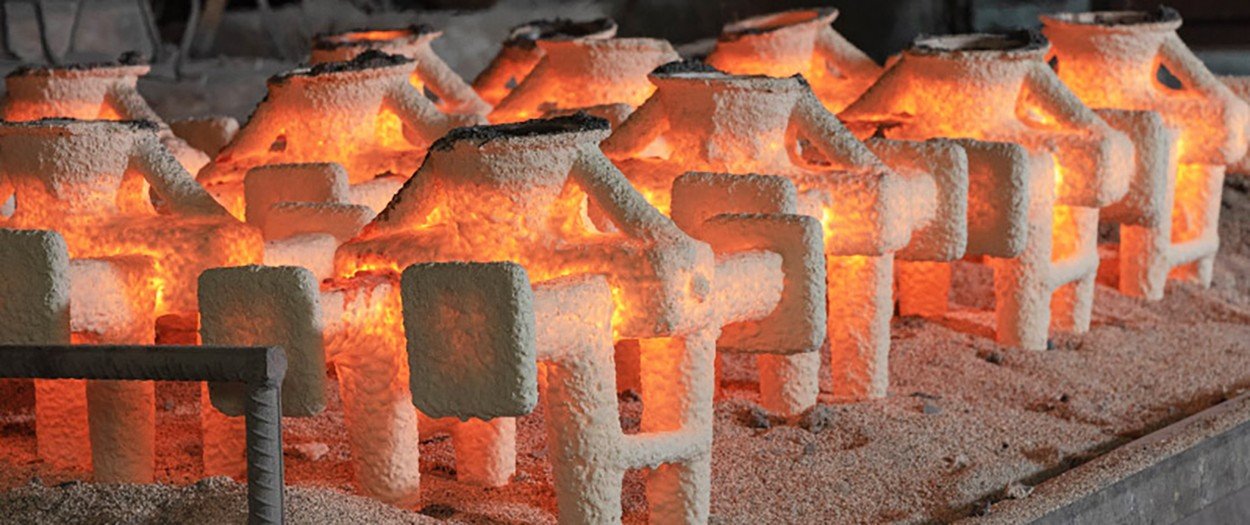
Metal Pouring and Solidification
The wax material can also have an impact on the metal pouring and solidification stages of the casting process. If the wax pattern has any voids or imperfections due to the properties of the wax, these can affect the flow of the molten metal into the mold. A well-designed wax pattern made from a suitable wax material will allow the molten metal to fill the mold cavity evenly, resulting in a uniform and defect-free casting. The thermal properties of the wax can also influence the solidification of the metal. Some waxes may act as heat sinks or insulators to some extent, affecting the rate at which the molten metal cools and solidifies. This can have implications for the microstructure and mechanical properties of the final casting. Casting services need to understand these interactions between the wax material and the metal pouring and solidification processes to produce high-quality castings consistently.
Future Trends in Wax Materials for Precision Casting
As technology continues to advance, the field of precision casting is also evolving, and this includes the development of new wax materials. There is a growing trend towards the use of more sustainable and environmentally friendly waxes. Some manufacturers are exploring the use of bio - based waxes, which are derived from renewable sources such as plants. These bio-based waxes offer the potential to reduce the environmental impact of the precision casting process without sacrificing performance.
Another area of research is the development of waxes with enhanced properties through nanotechnology. By incorporating nanoscale additives or modifying the wax at the molecular level, it may be possible to create waxes with even better flowability, strength, and dimensional stability. This could lead to further improvements in the quality and precision of castings. In addition, as industries such as aerospace and electronics continue to demand ever-smaller and more complex components, the need for waxes that can meet these challenging requirements will drive the development of new and improved wax materials. Casting services will need to stay at the forefront of these technological advancements to remain competitive in the market.
In conclusion, the choice of wax material in precision casting (lost wax casting) is a critical decision that can have a profound impact on the quality, accuracy, and cost - effectiveness of the casting service. Different wax materials, such as paraffin wax, microcrystalline wax, synthetic waxes, and specialty waxes, offer unique properties that make them suitable for different applications. Factors such as the complexity of the casting design, dimensional accuracy requirements, production volume, and thermal and chemical compatibility all play a role in determining the most appropriate wax material. As the precision casting industry continues to evolve, the development of new and improved wax materials will be essential to meet the growing demands of various industries.
Article Navigation
Article Navigation
Industries
Foundries
-

March.10, 2025
Achieving Precision in Metal Casting: Key Strategies for High-Quality Casting Parts
READ MORE
-

March.03, 2025
Addressing Defects in Castings: A Comprehensive Guide
READ MORE
-

February.25, 2025
How to Compare Product Quality Between Different Casting Foundries?
READ MORE
-

February.14, 2025
What Are The Metal Casting Materials Commonly Used in Foundries?
READ MORE
-

January.20, 2025
Surface Treatments for Metals After Casting
READ MORE
-

January.09, 2025
How to Select The Right Raw Materials for Casting Foundries?
READ MORE




